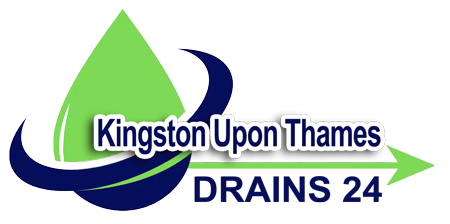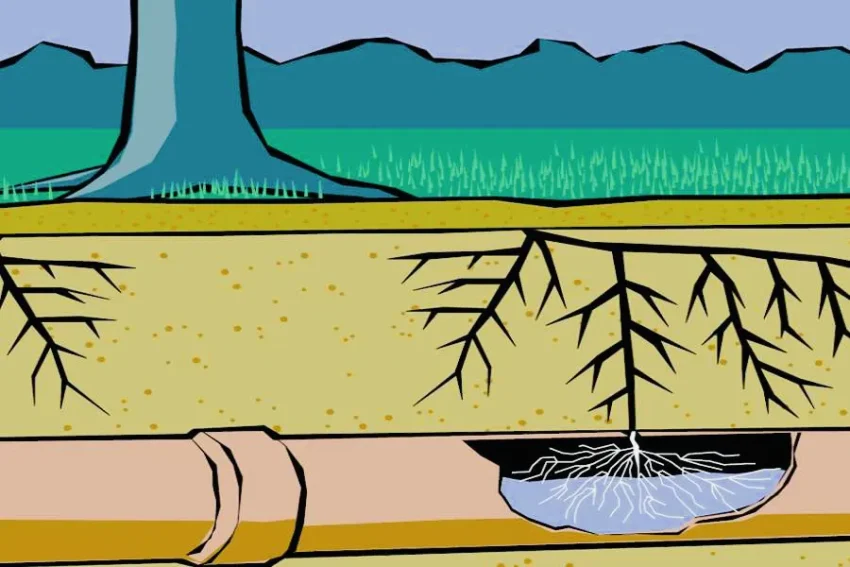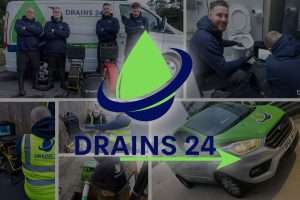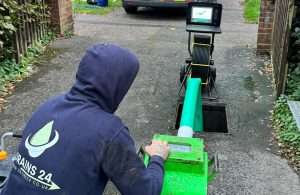Tree-lined streets and older properties across Kingston upon Thames, Surbiton, Norbiton, and Berrylands make this area particularly susceptible to tree root intrusion in drains. As pipes age, tiny gaps and weakened joints become prime entry points for root systems seeking moisture.
Once inside, roots expand, crack pipe walls, restrict flow, and eventually cause complete blockages.
In this guide, we explain how Kingston Drains24 identifies root intrusion — and the modern, no-dig methods used to fix it quickly and safely.
Why roots enter drains in Kingston
Root intrusion happens when trees detect moisture escaping through small gaps or cracks. Kingston’s landscape and housing stock contribute to higher risk:
- Victorian and Edwardian clay pipe systems
- Large tree coverage around private gardens
- Shrink–swell soil movement near the Thames basin
- Age-related pipe wear and displaced joints
Once roots enter, they quickly expand and trap debris — meaning blockages are only the beginning.
Signs your drains may have root intrusion
Root problems often develop slowly. Common symptoms homeowners report include:
- Slow draining sinks and toilets
- Frequent blockages or backups
- Gurgling noises from the system
- Smells from outdoor drains
- Flooding around gullies
- Manhole chambers showing visible roots
If more than one of these is happening, a professional inspection is essential.
How we diagnose root intrusion using CCTV inspections
The most accurate way to confirm root intrusion is through a CCTV drain survey.
Our Kingston engineers use high-definition cameras to assess pipe condition with zero excavation.
Step 1 — Initial jet clean
We perform safe jetting (WJA compliant) to remove loose debris so the camera gets a clear view.
Step 2 — CCTV diagnostics
Our engineers identify:
- Root entry points
- Cracks and structural damage
- Displaced joints
- Extent of blockage
- Pipe material and diameter
Step 3 — Condition report
A full written and video report is provided for homeowners, insurance companies, or Water Authority submissions.
Professional root removal techniques
Mechanical root cutting
A specialist rotating cutter is used to remove roots without damaging the pipe. This restores flow and prepares the pipe for repair.
High-pressure root flushing
Jetting removes fine root hairs and loose material around cracks.
Chemical root treatment
We apply an industry-approved root inhibitor foam inside the pipe to slow regrowth (safe for pipes, harmful to roots only inside the drain).
Long-term solutions — preventing roots from returning
Pipe relining (CIPP)
The most effective long-term fix is Cured-In-Place Pipe (CIPP) relining.
A resin-soaked liner is inserted and cured, forming:
- A fully sealed, joint-free pipe
- A smooth internal surface
- A barrier roots cannot penetrate
- A lifespan exceeding 50 years
Relining is ideal for Kingston because it avoids digging up patios, driveways or landscaped gardens.
Sectional patch repairs
If only a small area is affected, a local patch liner can reinforce the damaged section.
Why root issues are common in Kingston
Some properties are more vulnerable due to:
- Clay pipework used before the 1970s
- Soil movement near the Thames floodplain
- Larger mature trees (oak, willow, sycamore)
- Shallow drainage runs in older streets
Routine CCTV inspections help catch issues early before structural damage develops.
Why choose Kingston Drains24
- ✔ Fully certified NADC & WJA engineers
- ✔ No-dig repair specialists
- ✔ Fast response across Kingston, Norbiton, Surbiton & Berrylands
- ✔ Detailed CCTV reports provided
- ✔ Long-term solutions, not quick fixes
Tree roots can cause costly damage if left untreated. Early diagnosis and no-dig repairs ensure your drainage system stays clear and protected.
📞 Call Drains24 for root removal and drain repairs in Kingston upon Thames — available 24/7.
Root Intrusion FAQs
What causes tree roots to enter drains?
Tree roots enter drains through small cracks or displaced joints while searching for moisture. Older clay systems found across Kingston upon Thames are especially vulnerable, allowing roots to grow inside and cause blockages, structural damage, and reduced water flow.
How do I know if roots are damaging my drains?
Warning signs include frequent blockages, slow drainage, gurgling noises, foul smells, or visible roots inside manholes. A CCTV survey is the most reliable way to confirm root intrusion and assess the extent of any pipe damage.
Can roots be removed without digging?
Yes. Mechanical cutting and high-pressure water jetting remove roots safely without excavation. Most Kingston homes can be treated using no-dig techniques, especially when followed by relining to prevent regrowth.
Will roots grow back after removal?
Roots can regrow if the entry point isn’t sealed. Pipe relining creates a new internal pipe that blocks all cracks and joints, preventing roots from returning and offering long-term protection for your drainage system.
Is pipe relining better than digging up the garden?
Yes. Relining is faster, more cost-effective, and avoids disturbing driveways, patios or landscaped areas. It restores structural integrity and typically lasts over 50 years.




